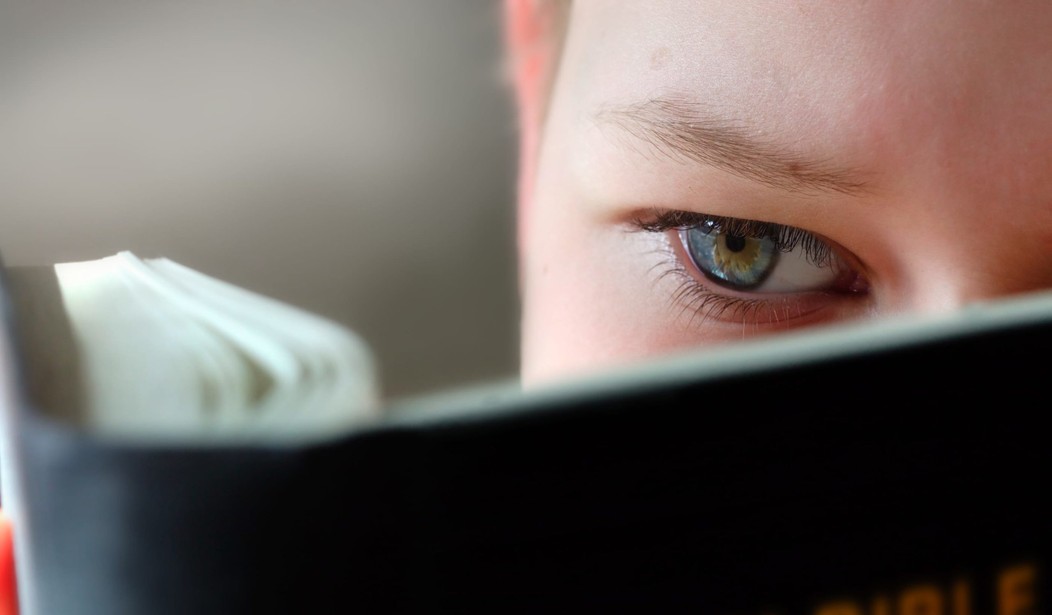Growing up, it seemed like classmates were breaking limbs, sustaining concussions, and requiring multiple stitches on a regular basis. Our playground equipment was hard, sharp, and often towered over a concrete surface. My generation’s parents appeared to operate under the belief that life was a dangerous obstacle course, and kids were best served by being thrown into the fire, so to speak. To be honest, as a parent of two, including a little boy who is his own worst enemy, I’m thankful that today’s playgrounds are far safer.
Granted, the instinct to protect children is a pendulum that can swing too far in the other direction. Not allowing children to take risks, learn the negative consequences of foolish actions, and explore their limits can be as detrimental to their development as allowing them to play on semi-deathtrap playground equipment. Regardless, it is right and just for parents to be concerned for the safety and well-being of their children.
One area of concern that most conservative Christian parents agree on is in regards to the need to be discerning about the content of movies, music, and books. A cottage industry has sprung up that provides parental guidance for entertainment options. Cuss words are counted and categorized, violence is deconstructed to determine both its teaching and thematic value, if any, and intimate situations are graded for age appropriateness. Those guides can be helpful tools for parents who desire to teach their children how to engage culture in a manner that is honoring to God. But what about passages in the Bible that contain plot elements that would render other books inappropriate for young children?
If you’re a conservative evangelical, as am I, you’re uncomfortable censoring the Bible. The Bible is God’s inspired word, after all—His revelation of Himself through a story. Inspired by the Holy Spirit, the Apostle Paul wrote, “All Scripture is breathed out by God and profitable for teaching, for reproof, for correction, and for training in righteousness” [emphasis added] (2 Timothy 16-17). Are parents allowed to skip passages from the Bible out of concern for the thematic appropriateness for kids? Well, that’s a sticky question that I’m going to avoid. Instead, by God’s grace, I’m going to endeavor to give parents a framework that can be an aid when interacting with thematically tough Bible stories.
One such passage is found in Genesis 9. Following on the narrative heels of the beloved story of Noah and the Ark, parents reading the book of Genesis to their kids will all of a sudden find themselves reading a story filled with drunkenness, nudity, and familial dissent.
Most Christians are familiar with the story – after disembarking from the Ark, Noah plants a vineyard that yields fruit; Noah subsequently gets falling-down drunk, and passes out nude in his tent. His son Ham discovers Noah and tells his brothers (the textual assumption is that Ham humiliated their father in some way). Instead of joining in Ham’s disrespect, Shem and Japheth enter the tent backwards, so as not to see their father, and cover Noah up with a cloak.
Anytime we’re reading the Bible with our kids, my wife and I attempt to ask questions that will help our children connect the smaller story to the larger story of Redemption. In other words, how does this story further the promise of God found in Genesis 3:15 to send a Redeemer to crush the head of the serpent? The story of Noah’s drunkenness is no different.
In Genesis 9, Noah is a new Adam in a new garden. For a few brief verses, everything seems good again. Could Noah be the promised seed who will crush the head of the serpent? Sadly, like the first Adam, the second Adam, Noah, falls. He sins. Furthering the parallel, Noah’s nakedness is exposed. The reader, or listener, is left with the realization that Noah is not the promised seed. We are to keep looking for someone else. But, Noah’s fall, like Adam’s fall, contains hope. After the son of Ham is cursed, similar to how the Serpent was cursed in Genesis 3, the offspring of Shem are blessed; God preserves the lineage from which the seed of the woman, the Redeemer, will come. That’s what we want our kids to take away from the story of Noah’s drunkenness and nudity.
Another problematic passage for young ears is the oft told tale of Joseph and Potiphar’s wife. After reading the story of Joseph being accused of attempted rape, I asked my ten-year-old daughter if the story reminded her of anything we had previously read in Genesis. She thought about it, looked at the text, and, with a little prodding, connected the story of Joseph and Potiphar’s wife with the story of Adam and Eve.
According to Genesis, Potiphar “left all that he had in Joseph’s charge.” Joseph had the freedom to enjoy everything in Potiphar’s house except one thing – his wife. Likewise, in the Garden of Eden, Adam and Eve had access to all of God’s creation except one thing – the Tree of the Knowledge of Good and Evil. After she recognized that parallel, I asked my daughter what resulted from Adam and Eve’s disobedience. She immediately responded, “death!”
That gave me the opportunity to discuss sin and death and God’s solution for sin and death – faith in the life, death, and resurrection of Christ Jesus. We talked about how life, the opposite of death, would’ve resulted if Adam and Eve had obeyed God. This made for a transition back to Joseph and Potiphar’s wife. When asked what was going to happen because of Joseph’s obedience, my daughter answered, albeit tentatively, “life.”
God used Joseph to preserve the lives of his family during the famine, preserving the line of Eve, Shem, and Abraham; the family line that would produce the Redeemer who would crush the head of the Serpent. The story of Joseph and Potiphar’s wife is a story of how God uses faithful obedience to save His people. It’s a story that prefigures the story of how God uses the obedience of the suffering servant, Christ Jesus, to reverse the curse caused by Adam and Eve’s disobedience and save His people from death.
As a parent, I understand the difficulty of appropriately guiding children through passages with non-kid friendly content. However, children need to learn to love God’s Word in its entirety. And they need to learn how to discern God’s story which will also serve to help them not become distracted by potentially confusing and/or giggle-worthy content. Asking children how the passage is related to the story of Redemption allows their focus to hone in on the purpose/message of the story and not the thematically tricky aspects. And, more importantly, it keeps their eyes on Jesus. It leads them to the cross.









Join the conversation as a VIP Member